Cocaine, Weapon and Migrant Smugglers Remanded in Custody
ZAGREB, 15 April (2022) - A Zagreb County Court investigating judge on Thursday evening remanded in custody all ten members of a criminal group suspected of smuggling cocaine from South America, murdering Milan Milovac, a close associate of Serbian drug lord Darko Šarić, and smuggling military weapons and migrants.
According to unofficial sources, Petar Ćosić aka Šarac and Manuel Vulić are suspected of killing Milovac.
USKOK anti-corruption office deputy head Željka Panza Ostrogonac said six criminal groups had been under investigation in two separate cases.
All criminal groups were high-profile gangs and the arrested Croatian nationals held high positions in them, she said.
Panza Ostrogonac said that the arrest of Serbian drug lord Darko Šarić in Belgrade on Thursday had some connection to the charges regarding the murder of Milovac, a Croatian national, in Ecuador.
Without revealing the suspects' identity, the prosecutorial authorities said earlier that an investigation had been launched into two groups of criminals based on a report by PNUSKOK police anti-corruption investigators and information collected in cooperation with several countries as well as EUROJUST and EUROPOL.
USKOK said that the first group of criminals consisted of ten members aged 36-63 while the other group had four members aged 29-41.
According to media reports, the 10-member group was led by Petar Ćosić aka Šarac, who in 2011 was arrested in an operation called Dogma for smuggling 339 kilograms of cocaine and was sentenced to four years in prison.
The other, four-member group, consisting of Marko Grunov, Ivan Stilinović, Tomislav Kljaić and Amer Draganović, is suspected of smuggling cocaine from Ecuador and the Dominican Republic.
The 10-member group is suspected of smuggling at least 609 kilograms of cocaine, sold for more than HRK 17 million. Some members of the group are suspected of smuggling automatic weapons, grenades, plastic explosive and pistols from Bosnia and Herzegovina to France and of smuggling 17 migrants from Croatia to Slovenia.
For more news about Croatia, click here.
Drunken Migrant Smuggler Takes 24 Foreigners To Wrong Town
August 27, 2020 – The inebriated people trafficker misheard or misunderstood and took his passengers to Dobrinj, on island Krk, instead of Brinje in Lika
They must have been very trusting of the driver or just very bad at geography. Migrants sitting in the back of a people smuggler's van on Tuesday ended up spending twice as long in the baking-hot confinement than they needed to.
It's only around 70 kilometres from the Bosnian border to Brinje, in Lika, their intended destination. You can do the journey in around an hour and twenty minutes. But, their inebriated driver misheard or misunderstood where they wanted to go. He instead took them to Dobrinj, on Krk island. It's a three-hour drive and almost 200 kilometres from the border to there.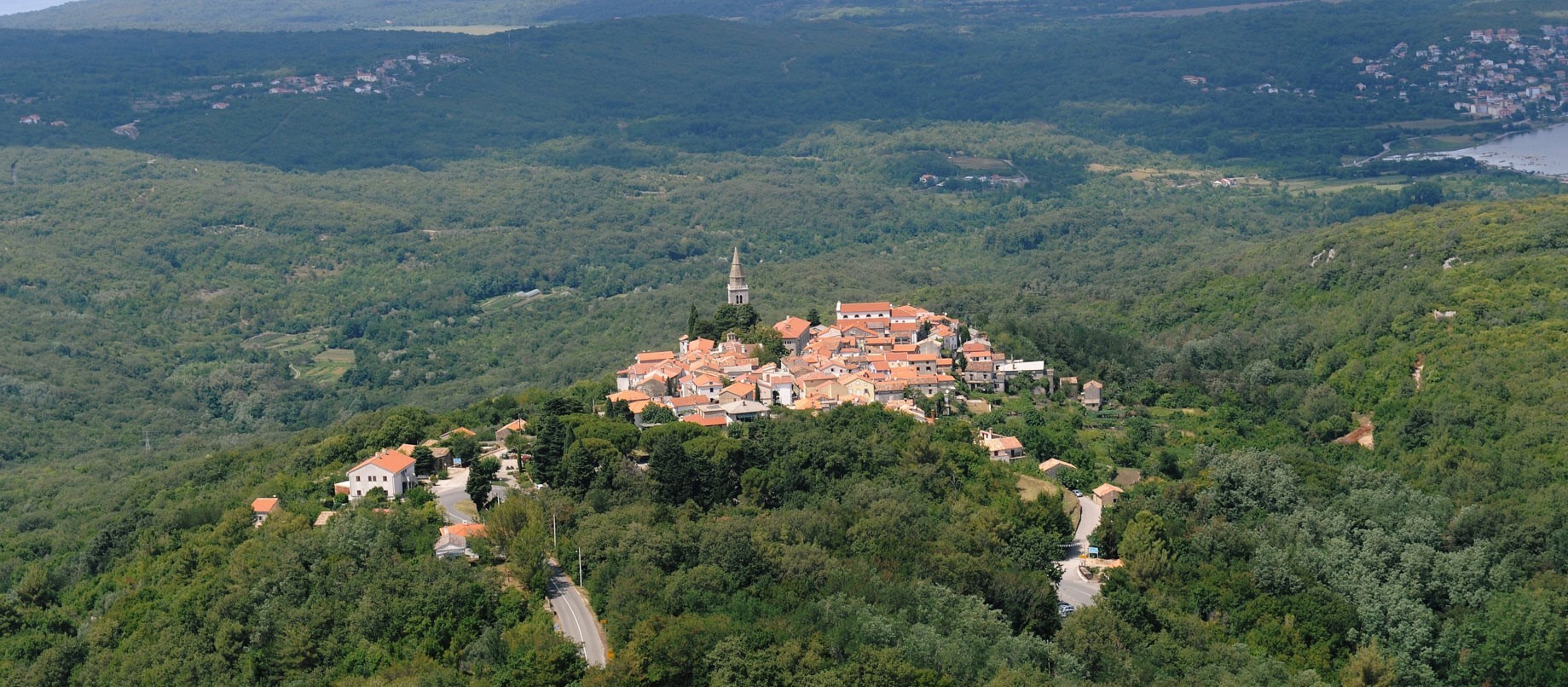
The sleepy village of Dobrinj is not used to hosting many visitors © Tourist Board Krk island
Not so popular with tourists as other parts of the island, Dobrinj is a sleepy village that relies more on its olives and sheep than on the footfall of visitors. It is not used to hosting strangers, save for the bears who occasionally come in winter to hibernate in the wilds on the outskirts of town.
Villagers were therefore taken aback when a heavily-loaded and struggling van with Zagreb license plates rolled into town at around 7pm. Even more shocking was the state of the driver. Novi list reports that locals he encountered described the man as being visibly intoxicated or "under the influence of heavier opiates."
But, an even greater surprise lay in store for those peering through their curtains at the curious scene. Once the doors of the windowless van were opened, some 24 out-of-place looking young men emerged.
Inhabitants of the village are reported to have expressed sympathy for the hapless and misguided passengers. Although the cretinous mistake by the driver is certain to have raised a few smiles. Island police were soon called to the scene and took both the driver and his passengers into custody in order to begin investigating exactly what had transpired.
Croatia Border Patrol Tracking Migrants With Portable Thermal Imaging
During the 2015 migrant crisis, Hungary and Slovenia built border barriers to thwart the influx of illegal migrants. Until recently, Croatia border guards have faced the daunting task of manually monitoring their unfenced 1,326 km border, which is also a non-Schengen EU border. However, with the help of advanced thermal imaging technology, Croatian border guards have finally gained an edge on stopping illegal migrant movement.
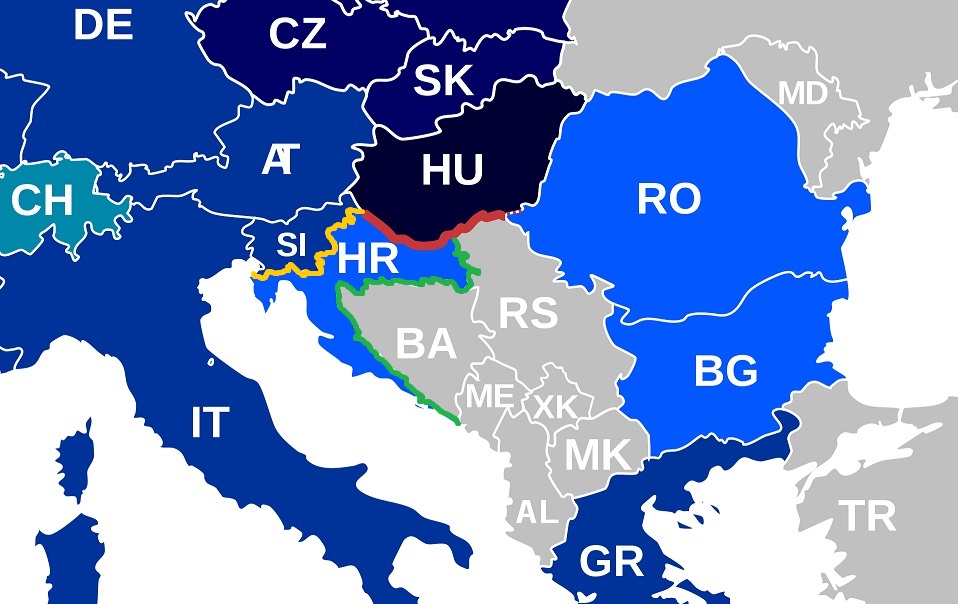
Hungary Border Fence (Red) | Slovenia Border Fence (Gold) | Croatia Border No Fence (Green) | Wikipedia
Unfenced Croatia EU Border 1,326 Kilometers Long
The Hungarian border barrier, which spans the borders of Serbia and Croatia, is 523 km long. The Slovenian border with Croatia spans 670 km. By contrast, Croatia shares a combined 1,326 km unfenced border with Bosnia and Serbia (1009 km with Bosnia, 317 km with Serbia). And migrants, many of whom are biding their time in nearby border camps, make repeated and daily attempts to enter Croatia from both countries, a practice which they call "The Game".
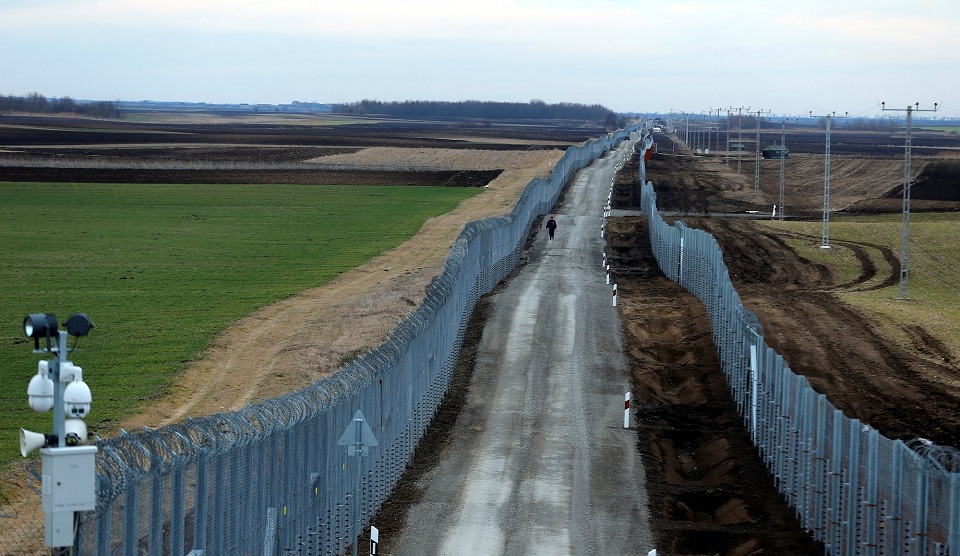
Hungary Border Fence | Wikimedia Commons
Electrified Hungarian Border Barrier Stopped Illegal Migration
Once completed in 2015, the Hungarian border barrier effectively halted migration into that country. It is equipped with parallel barbed-wire fences, floodlights, security cameras, and loudspeakers which blare warnings in English, Arabic and Farsi. The fences also deliver a mild electric shock upon contact, and have rendered any potential accusations of migrant pushbacks a moot point.
The Slovenian border barrier, while not as advanced, has also deterred attempts by migrants to enter Croatia’s Northwest neighbor. Both fences have effectively left many migrants, who are seeking entry into the Schengen zone, stranded in Croatia. While trapped in Croatia, they work with smugglers or attempt to continue their journey to Italy, Germany and France on their own.
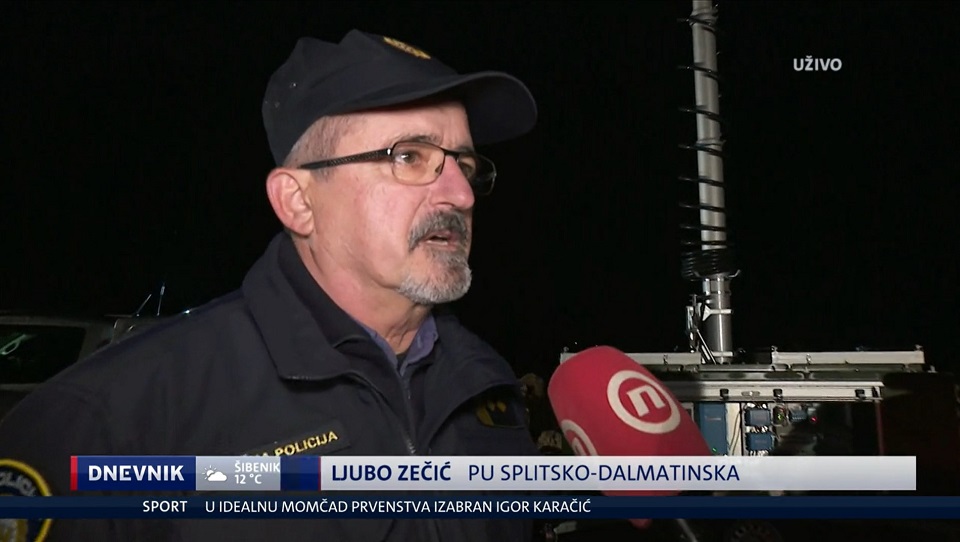
Croatia Begins Using Mobile Thermal Imaging Cameras
The Croatian border is now being protected by mobile thermal imaging cameras which can detect people illegally trying to enter Croatia from up to distance of several kilometers. The Nova TV/Dnevnik news team went to the border on January 26, 2020 and was the first to see how the 6 million EUR system works in practice.
Croatian police departments located on the illegal migrant route and roads leading to Croatia have been equipped with 17 Flir mobile camera systems.
Ljubo Zečić of the Splitsko Dalmatinska County Police Administration said that there are two devices are in their jurisdiction and indicated that it is very helpful that the system is mobile and can be easily transferred to positions which have been detected as frequent crossings.
Most Migrants Enter Croatia From Sarajevo and Mostar
"Most migrants coming from Bosnia are attempting to enter Splitsko Dalmatinska County from Sarajevo and Mostar. In 2019, our police department reported a 30 percent increase in illegal migrants and a 54 percent increase in smugglers," Zečić said.
Tomislav Poljak from the Trilj station demonstates the Flir thermal imaging device, which has already thwarted the plans of numerous migrants and smugglers to enter Croatia illegally.
"Our colleagues are walking about two and a half kilometers from us, and we can detect exactly what is happening at that distance with this device," explains Poljak.
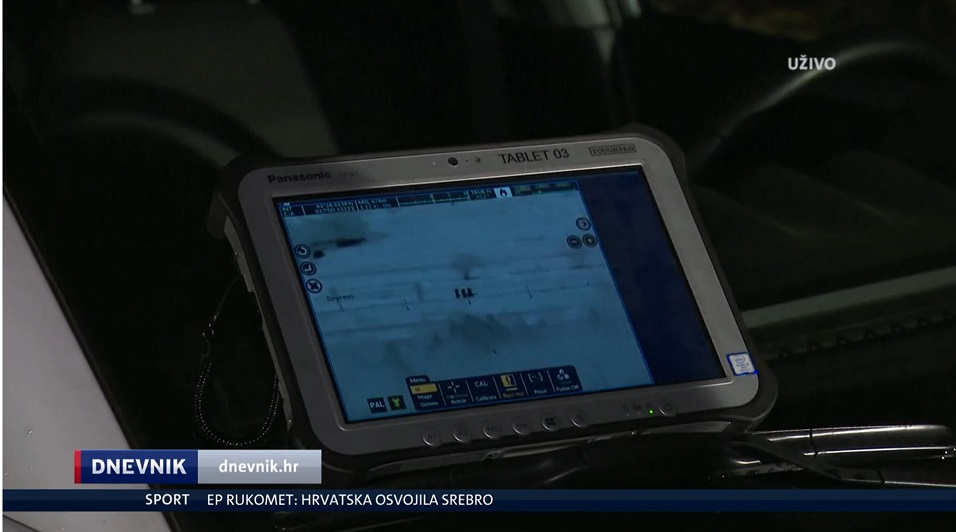
Migrant Cell Phones Permit Communication and Coordination
As soon as Tomislav's work shift began, he noticed some suspicious activity on the border. It was likely that someone was attempting to enter Croatia on a gravel road, which is often used by migrants going to Sinj. The nearest border control team was immediately dispatched to the field.
"A lot of migrants have very good cell phones and are quite well informed. And nowadays, they use temporary sim cards with these cell phones. They always have another trick up their sleeves,” Tomislav points out.
Cameras Detect Migrant Movement Across Bosnia Border
Almost a kilometer above sea level, the police officers found an abandoned truck which migrants often us to seek shelter from bad weather. Since there was no one in the truck, the Trilj border guards continued their search with manual thermal imaging devices.
"Without this technology, it would be much harder to do our job because you cannot see anything in the dark with human eyes," Zdenko explains.
The police action was soon abandoned because the suspect returned to Bosnia and Herzegovina.
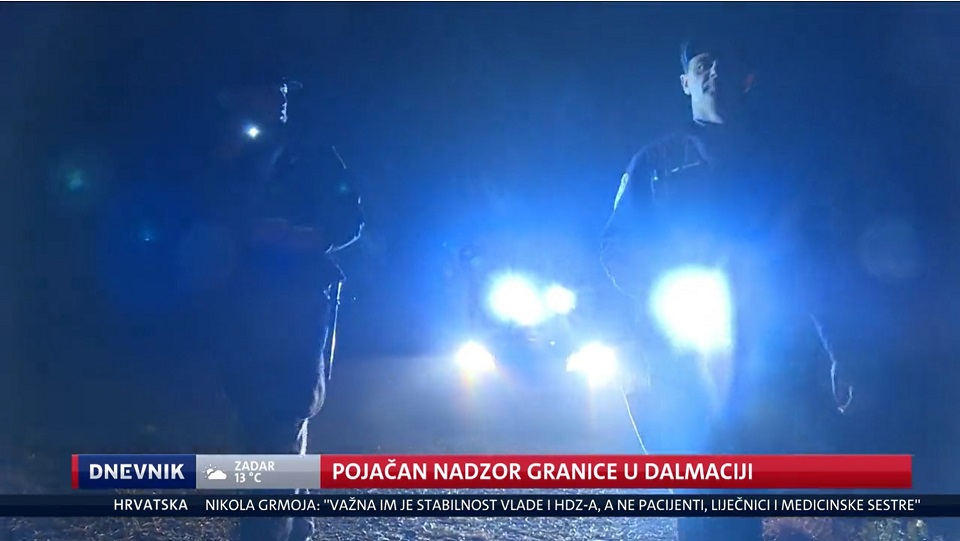
Cameras Can Be Moved Within 20 Minutes
The benefits of these devices are numerous. "If we need to move it to another location quickly, it takes us maybe 15-20 minutes to pack it up and drop it off," Tomislav says.
The cost of one Flir thermal imaging camera is almost 2.7 million HRK (362,789 EUR). If you approach it; the device automatically notifies police officers on the ground and issues a verbal warning. With the help of this technology, police believe that they will finally be able to stay a step ahead of smugglers and people trying to enter Croatia illegally.
Follow our Politics page to keep track of the migrant crisis in Croatia and efforts to control illegal border movement.
Croatia Detains Three British Nationals Over Migrant Smuggling
Some rather disappointing news has come to light thanks to a report from The Washington Post as it continues to look at Europe's migrant crisis on November the 4th, 2019 - and Croatia is in the limelight.
As the Associated Press/WP writes on the 4th of November, 2019, three British nationals have been caught and are currently being held by Croatian police (MUP) for apparently smuggling illegal migrants. The publication claims that one of the individuals in question also attempted to run over a Croatian police officer in a vehicle.
WP writes that a statement reads that Croatian police approached a vehicle which was being driven by a 31-year-old British man while parked close to the Slovenian border. The car then sped toward one of the officers, leading him to jump out of the oncoming vehicle's path to safety.
Following that already strange incident, the individual was arrested. According to a statement from the police on Monday, the man who seems to have attempted to run over, or at best scare the Croatian police officer was linked to two other men, who also hold British citizenship, who were trying to transport a number of ''foreign citizens'' (their citizenships have not been specified) over the Slovenian-Croatian border in a van.
In addition to that, the authorities in Croatia's neighbour to the north, Slovenia, have claimed that their police officers have also caught and detained as many as nine people who hold various different citizenships for trying to smuggle migrants, recording a very concerning 150 attempted illegal border crossings since last Wednesday alone.
In addition to this, WP reports that issues of a similar nature involving migrants have occurred in other European countries over the last couple of days, too.
We will continue to update this article as more information is officially released. Stay tuned.
Make sure to follow our politics page for more.


